 The true traveller is he who goes on foot, and even then, he sits down a lot of the time. Colette (1873-1954) Paris from My Window, 1944
The true traveller is he who goes on foot, and even then, he sits down a lot of the time. Colette (1873-1954) Paris from My Window, 1944
When you’re on holiday you may not want to spend each and every day lazing round the pool reading, or paddling with the children on the beach: you might want to get out and about for a day or two, see a few different towns, temples, sights – and let’s not forget the shops.
You can walk, hire a car or bike, catch a taxi, bus, train, plane or ferry. Ko Samui may be a small island, but it has good communication and transport facilities, even if some of the roads might be a bit rough, especially after the rains!
Walking is probably my favourite way of seeing around the island: you are not cut off by glass windows; you can stop when you want to; you will know exactly (one hopes!) where you are going; and you can time your outward journey so that your homebound one gets you back in good time for a shower before the all-important sundowners and supper.
It does get hot though! So make sure you have a map, take water, sunscreen, a hat, and wear good walking shoes. Take a mobile phone with you, and contact numbers just in case of an emergency. If you’d rather not do it alone, then this website gives good advice, and contact information so that you can join them on their various hikes into the hills: http://walksamui.blogspot.com/2011/01/walk-and-live-in-koh-samui.html .
Car and bike hire – hiring a vehicle or a bike is easy, but you should be warned that the roads can be rough, there may be a slow-moving construction traffic, and the driving of others can be inconsistent and not of a standard with which you are probably familiar. Plus there are some quirks to the Thai Highway Code which need mentioning. Usually, if you are driving on a road, you are the one with the right of way. But in Thailand this is not the case: you must give way to oncoming traffic that moves over into your lane, and also to traffic coming from behind which is moving faster than you. This is why you will see many people moving over as far to the left as possible to allow others to pass, often making use of the hard shoulder to let this happen. If you approach close to a slower moving vehicle, then it is polite to give a short hoot of your horn to allow them to know you are there, and wishing to pass.
You will also need to keep your eyes in front of you, to your left and your right side, and behind you at all times! Not only will you need to watch out for other vehicles, but for debris in the road, animals and children – and you will also need to keep a very respectful and courteous head on your shoulders.
If you intend to hire a moped, bicycle or motorbike, then you must wear a helmet. Not wearing one and being caught by the police will get you an immediate fine. Not only that, but wearing one might just save your life should you be unlucky and have an accident.
Still want to hire a car or a moped? If you book your villa through Samui Island Villas, they can organise car hire for you. You will need your passport, a credit card, an International Driving Licence or your own home country licence.
Do not be tempted to hire a car from a hire company that says you do not need to have a driving licence, as you will not be covered by insurance if you have an accident and if you are pulled over by the police you will be fined at the very least. If you are staying for longer than three months, then you will need to get a Thai driver’s licence otherwise, again, you will not be covered by insurance.
Given up on that idea? Why not hire a taxi, and let someone else be all-seeing and ever-careful, while you enjoy the views. You can hire a taxi from the roadside, or outside the bigger shops. Be ready to bargain if you wish to hire a car for a full day.
Ferry, bus, coach, mini-bus - here’s a good site that will give you their timetables – www.samuiwestcoast.de/samui/samui_transport.htm
Or why not consider using the songthaews, Samui’s public transport system which consists of converted pick-ups with bench seats. These circle the island on fixed routes all day. Fares are cheap and are paid at the end of your journey. If you want to catch one, you just wave it down as there are no set stopping places. And when you want to get off, ring the bell or bang on the roof! During the evenings these songthaews often turn into private taxis and you will have to negotiate your price before getting in.
The cabs with meters are yellow, and have a TAXI METER sign on the top. These are usually air conditioned. Prices might be high, as most drivers don’t seem to be all that interested in turning on their meters: but if you’re happy with that, try to get some idea of what the journey’s going to cost you before getting in.
You can also get a motorbike taxi, which are very cheap, but you may have some safety concerns about these. Make sure the driver has a helmet for you, and you may want to line it with a cloth of your own before actually putting it on.
Flying – you possibly flew in from Bangkok International Airport, so you will know that you can fly out again, should you wish to visit Bangkok itself for a few days, or go on to Chiang Mai … At the moment you can fly between Bangkok and Ko Samui on Thai Airways and Bangkok Airways.
The true travelThe true traveller is he who goes on foot, and even then, he sits down a lot of the time. Colette (1873-1954) Paris from My Window, 1944
When you’re on holiday you may not want to spend each and every day lazing round the pool reading, or paddling with the children on the beach: you might want to get out and about for a day or two, see a few different towns, temples, sights – and let’s not forget the shops.
You can walk, hire a car or bike, catch a taxi, bus, train, plane or ferry. Ko Samui may be a small island, but it has good communication and transport facilities, even if some of the roads might be a bit rough, especially after the rains!
Walking is probably my favourite way of seeing around the island: you are not cut off by glass windows; you can stop when you want to; you will know exactly (one hopes!) where you are going; and you can time your outward journey so that your homebound one gets you back in good time for a shower before the all-important sundowners and supper.
It does get hot though! So make sure you have a map, take water, sunscreen, a hat, and wear good walking shoes. Take a mobile phone with you, and contact numbers just in case of an emergency. If you’d rather not do it alone, then this website gives good advice, and contact information so that you can join them on their various hikes into the hills: http://walksamui.blogspot.com/2011/01/walk-and-live-in-koh-samui.html .
Car and bike hire – hiring a vehicle or a bike is easy, but you should be warned that the roads can be rough, there may be a slow-moving construction traffic, and the driving of others can be inconsistent and not of a standard with which you are probably familiar. Plus there are some quirks to the Thai Highway Code which need mentioning. Usually, if you are driving on a road, you are the one with the right of way. But in Thailand this is not the case: you must give way to oncoming traffic that moves over into your lane, and also to traffic coming from behind which is moving faster than you. This is why you will see many people moving over as far to the left as possible to allow others to pass, often making use of the hard shoulder to let this happen. If you approach close to a slower moving vehicle, then it is polite to give a short hoot of your horn to allow them to know you are there, and wishing to pass.
You will also need to keep your eyes in front of you, to your left and your right side, and behind you at all times! Not only will you need to watch out for other vehicles, but for debris in the road, animals and children – and you will also need to keep a very respectful and courteous head on your shoulders.
If you intend to hire a moped, bicycle or motorbike, then you must wear a helmet. Not wearing one and being caught by the police will get you an immediate fine. Not only that, but wearing one might just save your life should you be unlucky and have an accident.
Still want to hire a car or a moped? If you book your villa through Samui Island Villas, they can organise car hire for you. You will need your passport, a credit card, an International Driving Licence or your own home country licence.
Do not be tempted to hire a car from a hire company that says you do not need to have a driving licence, as you will not be covered by insurance if you have an accident and if you are pulled over by the police you will be fined at the very least. If you are staying for longer than three months, then you will need to get a Thai driver’s licence otherwise, again, you will not be covered by insurance.
Given up on that idea? Why not hire a taxi, and let someone else be all-seeing and ever-careful, while you enjoy the views. You can hire a taxi from the roadside, or outside the bigger shops. Be ready to bargain if you wish to hire a car for a full day.
Ferry, bus, coach, mini-bus - here’s a good site that will give you their timetables – www.samuiwestcoast.de/samui/samui_transport.htm .
Or why not consider using the songthaews, Samui’s public transport system which consists of converted pick-ups with bench seats. These circle the island on fixed routes all day. Fares are cheap and are paid at the end of your journey. If you want to catch one, you just wave it down as there are no set stopping places. And when you want to get off, ring the bell or bang on the roof! During the evenings these songthaews often turn into private taxis and you will have to negotiate your price before getting in.
The cabs with meters are yellow, and have a TAXI METER sign on the top. These are usually air conditioned. Prices might be high, as most drivers don’t seem to be all that interested in turning on their meters: but if you’re happy with that, try to get some idea of what the journey’s going to cost you before getting in.
You can also get a motorbike taxi, which are very cheap, but you may have some safety concerns about these. Make sure the driver has a helmet for you, and you may want to line it with a cloth of your own before actually putting it on.
Flying – you possibly flew in from Bangkok International Airport, so you will know that you can fly out again, should you wish to visit Bangkok itself for a few days, or go on to Chiang Mai … At the moment you can fly between Bangkok and Ko Samui on Thai Airways and Bangkok Airways. ler is he who goes on foot, and even then, he sits down a lot of the time. Colette (1873-1954) Paris from My Window, 1944
When you’re on holiday you may not want to spend each and every day lazing round the pool reading, or paddling with the children on the beach: you might want to get out and about for a day or two, see a few different towns, temples, sights – and let’s not forget the shops.
You can walk, hire a car or bike, catch a taxi, bus, train, plane or ferry. Ko Samui may be a small island, but it has good communication and transport facilities, even if some of the roads might be a bit rough, especially after the rains!
Walking is probably my favourite way of seeing around the island: you are not cut off by glass windows; you can stop when you want to; you will know exactly (one hopes!) where you are going; and you can time your outward journey so that your homebound one gets you back in good time for a shower before the all-important sundowners and supper.
It does get hot though! So make sure you have a map, take water, sunscreen, a hat, and wear good walking shoes. Take a mobile phone with you, and contact numbers just in case of an emergency. If you’d rather not do it alone, then this website gives good advice, and contact information so that you can join them on their various hikes into the hills: http://walksamui.blogspot.com/2011/01/walk-and-live-in-koh-samui.html .
Car and bike hire – hiring a vehicle or a bike is easy, but you should be warned that the roads can be rough, there may be a slow-moving construction traffic, and the driving of others can be inconsistent and not of a standard with which you are probably familiar. Plus there are some quirks to the Thai Highway Code which need mentioning. Usually, if you are driving on a road, you are the one with the right of way. But in Thailand this is not the case: you must give way to oncoming traffic that moves over into your lane, and also to traffic coming from behind which is moving faster than you. This is why you will see many people moving over as far to the left as possible to allow others to pass, often making use of the hard shoulder to let this happen. If you approach close to a slower moving vehicle, then it is polite to give a short hoot of your horn to allow them to know you are there, and wishing to pass.
You will also need to keep your eyes in front of you, to your left and your right side, and behind you at all times! Not only will you need to watch out for other vehicles, but for debris in the road, animals and children – and you will also need to keep a very respectful and courteous head on your shoulders.
If you intend to hire a moped, bicycle or motorbike, then you must wear a helmet. Not wearing one and being caught by the police will get you an immediate fine. Not only that, but wearing one might just save your life should you be unlucky and have an accident.
Still want to hire a car or a moped? If you book your villa through Samui Island Villas, they can organise car hire for you. You will need your passport, a credit card, an International Driving Licence or your own home country licence.
Do not be tempted to hire a car from a hire company that says you do not need to have a driving licence, as you will not be covered by insurance if you have an accident and if you are pulled over by the police you will be fined at the very least. If you are staying for longer than three months, then you will need to get a Thai driver’s licence otherwise, again, you will not be covered by insurance.
Given up on that idea? Why not hire a taxi, and let someone else be all-seeing and ever-careful, while you enjoy the views. You can hire a taxi from the roadside, or outside the bigger shops. Be ready to bargain if you wish to hire a car for a full day.
Ferry, bus, coach, mini-bus - here’s a good site that will give you their timetables – www.samuiwestcoast.de/samui/samui_transport.htm .
Or why not consider using the songthaews, Samui’s public transport system which consists of converted pick-ups with bench seats. These circle the island on fixed routes all day. Fares are cheap and are paid at the end of your journey. If you want to catch one, you just wave it down as there are no set stopping places. And when you want to get off, ring the bell or bang on the roof! During the evenings these songthaews often turn into private taxis and you will have to negotiate your price before getting in.
The cabs with meters are yellow, and have a TAXI METER sign on the top. These are usually air conditioned. Prices might be high, as most drivers don’t seem to be all that interested in turning on their meters: but if you’re happy with that, try to get some idea of what the journey’s going to cost you before getting in.
You can also get a motorbike taxi, which are very cheap, but you may have some safety concerns about these. Make sure the driver has a helmet for you, and you may want to line it with a cloth of your own before actually putting it on.
Flying – you possibly flew in from Bangkok International Airport, so you will know that you can fly out again, should you wish to visit Bangkok itself for a few days, or go on to Chiang Mai … At the moment you can fly between Bangkok and Ko Samui on Thai Airways and Bangkok Airways.

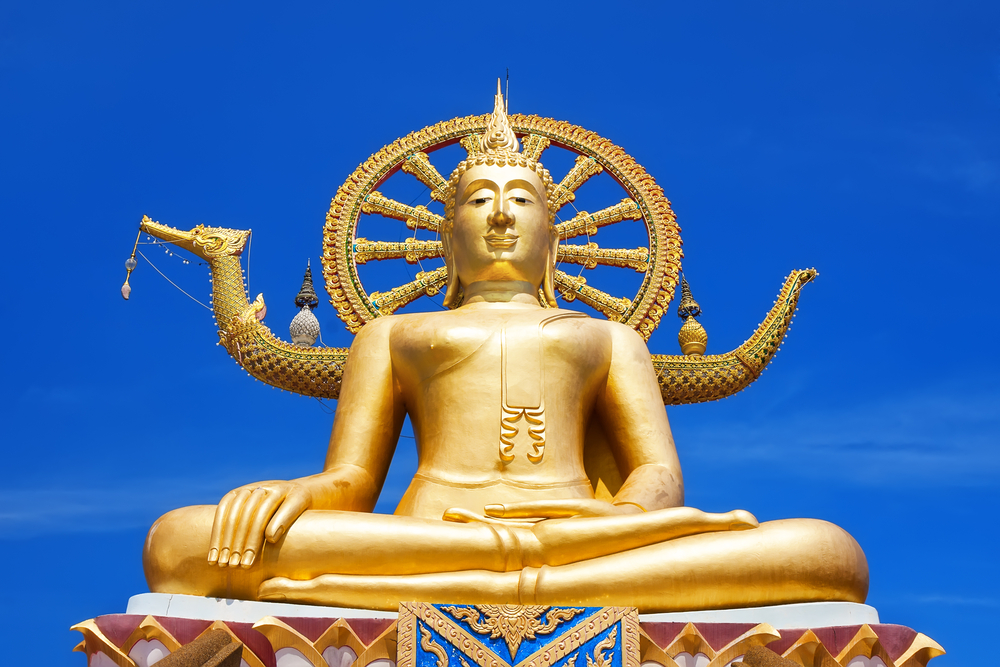

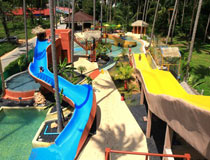

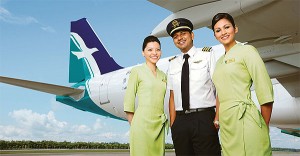 Singapore’s SilkAir is stepping up its flight cooperation with Bangkok Airways to make Koh Samui its third port of call in Thailand.
Singapore’s SilkAir is stepping up its flight cooperation with Bangkok Airways to make Koh Samui its third port of call in Thailand. I am very strict with my packing and have everything in its right place. I never change a rule. I hardly use anything in the hotel room. I wheel my own wardrobe in and that’s it. Charlie Watts
I am very strict with my packing and have everything in its right place. I never change a rule. I hardly use anything in the hotel room. I wheel my own wardrobe in and that’s it. Charlie Watts Some beach somewhere, there’s a big umbrella casting shade over an empty chair. Palm trees are growing, warm breezes blowing. I picture myself there, some beach somewhere. (Unknown)
Some beach somewhere, there’s a big umbrella casting shade over an empty chair. Palm trees are growing, warm breezes blowing. I picture myself there, some beach somewhere. (Unknown) The true traveller is he who goes on foot, and even then, he sits down a lot of the time. Colette (1873-1954) Paris from My Window, 1944
The true traveller is he who goes on foot, and even then, he sits down a lot of the time. Colette (1873-1954) Paris from My Window, 1944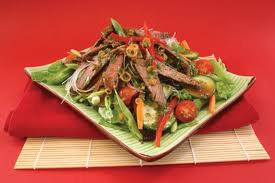 Tell me what you eat, I’ll tell you who you are. Anthelme Brillat-Savarin.
Tell me what you eat, I’ll tell you who you are. Anthelme Brillat-Savarin. 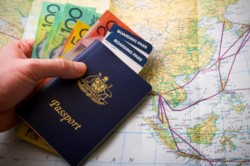 Broadly speaking, the short words are the best, and the old words best of all. Winston Churchill, 1874-1965
Broadly speaking, the short words are the best, and the old words best of all. Winston Churchill, 1874-1965 There is nothing, absolutely nothing, half so much worth doing as simply messing about in boats. (Kenneth Grahame, 1859-1932)
There is nothing, absolutely nothing, half so much worth doing as simply messing about in boats. (Kenneth Grahame, 1859-1932)
 You haven’t seen a tree until you’ve seen its shadow from the sky. (Amelia Earhart, 1897-1937)
You haven’t seen a tree until you’ve seen its shadow from the sky. (Amelia Earhart, 1897-1937)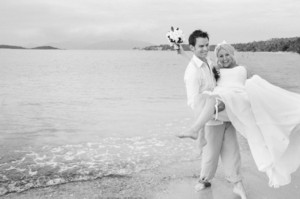 Our wedding was many years ago. The celebration continues to this day. (Gene Perret)
Our wedding was many years ago. The celebration continues to this day. (Gene Perret)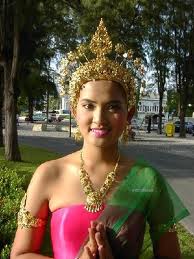
 The world makes up for all its follies and injustices by being damnably sentimental. (Thomas H Huxley)
The world makes up for all its follies and injustices by being damnably sentimental. (Thomas H Huxley)